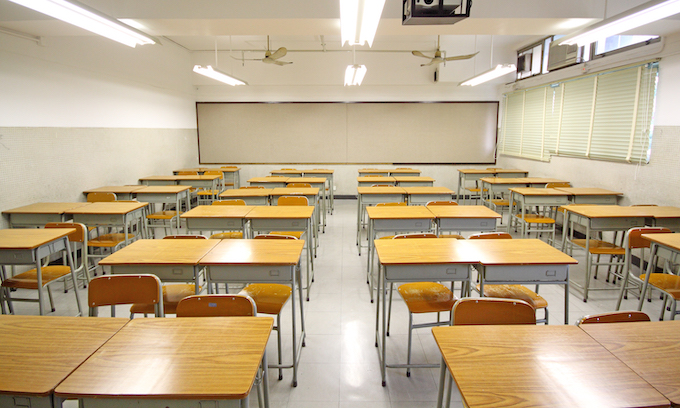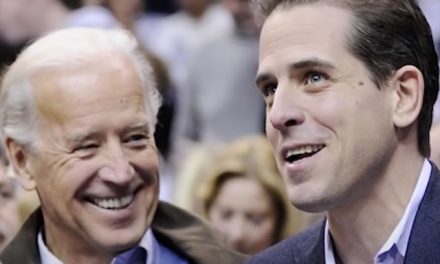For longtime educator and researcher Nancy Latham, the anticipated teacher shortages at Illinois schools this fall are far more than abstract, pedagogical theories.
On the contrary, with 55% of teachers who participated in a recent nationwide survey signaling they are considering leaving the profession, Latham is worried how the state’s expected school employee shortages will affect the roughly 1.8 million Illinois students returning to the classroom for the start of the 2022-23 school year.
“When teachers are saying, ‘I can go to Amazon and make $22 an hour — I’m out of here,’ how do we respond?” said Latham, associate dean for the College of Education and executive director for the Council on Teacher Education at the University of Illinois at Urbana-Champaign.
“It will be very interesting to see how we’re going to respond,” said Latham, an educator for over 30 years. “What will a school do if it has 50 kindergartners signed up for two classes, but the school has only one kindergarten teacher? Do you combine classes?”
Exhausted, overwhelmed and anxious, and heading into their fourth school year teaching during the COVID-19 pandemic, educators across the U.S. are facing unprecedented hardships that some say are exacerbating critical shortages of school employees.
With shortages of certified teachers and paraprofessionals as well as a scarcity of bus drivers, nurses and school lunch workers, some experts say the steady departure of school employees during the pandemic, paired with today’s robust job market, has found school districts scrambling this summer to fill thousands of open positions statewide.
“Staffing is a significant challenge for us, and (shortages) are trending a little bit higher than they were last year,” said Tony Sanders, superintendent of Elgin-based School District Unit 46.
Sanders said the district is searching this summer for candidates to fill 177 certified teaching positions, and has 121 vacancies for paraprofessionals to staff the district’s 53 schools, enrolling about 36,000 students in pre-K through 12th grades.
The suburban district is also in need of additional employees for myriad essential jobs, including bus drivers and building maintenance workers, Sanders said, explaining that school employee shortages “are absolutely not just teachers.”
With many pandemic-era jobs outside school buildings offering hybrid schedules that give employees the flexibility to work from home, Sanders said it has become more competitive to recruit candidates for positions that require employees to work in person.
“You need to be in person when you’re providing services to kids, and not just teaching, but keeping our buildings running,” Sanders said.
A Chicago Public Schools spokesperson said the district’s “recruitment and retention efforts are ongoing and have grown in the past several years.”
This year, CPS administration set school budgets a month earlier than prior years to help schools plan and hire for the 2022-23 school year for the district’s roughly 626 schools, which had a 2.7% teacher vacancy rate at the end of this school year “and had unprecedented success in hiring a diverse pool of candidates for 2022,” CPS spokesperson Mary Fergus said.
Multiple job fairs to recruit employees are planned for this month, and officials “expect a steady cadence of candidates meeting hiring managers and/or principals every week in July,” Fergus said.
In addition, Fergus said CPS “has initiated a robust campaign to recruit, hire and retain substitute teachers and paraprofessionals.”
Fergus said federal “COVID-19 funds have fully supported these new strategies and initiatives. CPS continues its efforts to hire qualified teachers, support staff, and increase the substitute pool.”
Other CPS recruitment and retention initiatives include the CPS Teacher Residency program, the Great Expectations program and the Teach Chicago Tomorrow program, Fergus said, with in-person job fairs scheduled for Friday and July 27, and an event for school support staff slated for July 20.
Illinois State Board of Education Superintendent Carmen Ayala said Tuesday that many of the state’s certified teacher vacancies are related to special education and bilingual education, and that the shortages are primarily concentrated in low-income and chronically struggling schools.
According to an October 2021 ISBE Unfilled Positions Survey, a total of 5,307 vacancies statewide included 2,139 certified teachers; 2,439 paraprofessionals; 639 school support staff; and 90 administrators.
The data do not include substitute teachers and bus drivers, ISBE officials said.
In addition, the ISBE survey data show Illinois added 6,801 new teachers to the profession, for a net increase of 1,240 teachers, and a teacher vacancy of 1.5% statewide.
“I’m not saying we don’t have any teacher shortages, but we’ve really worked hard, and it’s showing,” Ayala said.
“Across the nation, teachers are being censored and having their benefits removed, while in Illinois we are investing in our teachers,” Ayala said.
Countering predictions that record numbers of educators might be retiring earlier than anticipated due to pandemic challenges, the most recent data from the Teachers’ Retirement System of the State of Illinois reflects only a slight increase from 2019.
During the three most frequent months for teachers to submit their retirement paperwork, March, April and May, a total of 2,271 teachers during that period in 2019 indicated they would be seeking their pensions, rising to 2,394 teachers for the same three months in 2022, according to TRS spokesman Dave Urbanek.
TRS members can retire whenever they choose if they meet all of the minimum age and service requirements, Urbanek said. Although teachers can retire at any time during the school year, most choose to retire in conjunction with the end of a school year, he said.
Still, with a recent National Education Association survey of its members finding more than half of school employees signaling they are thinking about leaving the profession earlier than they had planned, the lack of a spike in retirements does not reflect the surging number of younger workers departing to seek new careers outside the classroom.
The NEA survey also found “a disproportionate percentage of Black (62%) and Hispanic/Latino (59%) educators, already underrepresented in the teaching profession, were looking toward the exits,” officials said.
Eighty-six percent of members surveyed said they have seen more educators leaving the profession or retiring early since the start of the pandemic in 2020.
According to the U.S. Bureau of Labor Statistics, there were approximately 10.6 million educators working in public education in January 2020; today there are 10 million, a net loss of about 600,000, NEA officials said.
The BLS Job Openings and Labor Turnover survey found that the ratio of hires to job openings in the education sector reached new lows as the 2021-22 school year started. It currently stands at 0.59 hires for every open position, a large decrease from 1.54 in 2010 and 1.06 in 2016, NEA officials said.
According to the NEA survey, three-fourths of members said they’ve had to fill in for colleagues or take other duties due to these shortages. Furthermore, 80% report that unfilled job openings have led to more work obligations for the educators who remain.
In addition, the survey found 91% of respondents saying that pandemic-related stress is a serious problem for educators and 90% of members say feeling burned out is a serious problem, with 67% saying it’s very serious.
Inadequate pay also appears to be a key factor driving the exodus of educators, with a recent NEA report finding during the 2020-21 school year first-year teachers earned an average of $41,770, which, when adjusted for inflation, represents a 4% decrease from the previous year.
In Illinois, where Gov. J.B. Pritzker signed a law that will raise the minimum salary for teachers to $40,000 by the 2023-24 school year, the NEA report rated the state 23rd in the nation, with an average teacher starting salary of $41,228.
NEA President Becky Pringle said the stress of teaching during the pandemic, insufficient pay and safety concerns tied to mass shootings across the U.S. have exacerbated the teacher shortage, and students are paying the price.
“We are all still reeling from 19 babies and two colleagues being gunned down,” Pringle said, referring to the May 24 shooting at Robb Elementary School in Uvalde, Texas. Recalling her days as a middle school science teacher, Pringle said that after school shootings were reported in the U.S., her students would pose the questions, “Mrs. Pringle, are we safe? Can that happen here?”
“I said with confidence, ‘The adults will never let this happen again,’” Pringle said. “And teachers are having those same questions posed by students today.”
The pandemic’s devastating toll on students’ social and emotional health has also presented steep challenges for educators, as has “the disinvestment in public education for decades,” Pringle said.
“Teachers are leaving the profession, and when we dug in, the first issue was educator pay, and not feeling valued,” Pringle said.
While the eruption of parent culture wars surrounding COVID-19 mitigation strategies including masking and vaccines during the pandemic proved disheartening to educators, Pringle said the acrimony unfortunately overshadowed the strong partnerships forged between teachers and parents.
“What gets reported on is the vitriolic battles, which sends a message of that’s what is happening, and reinforces negative messages, but that’s not the norm, and not near the majority of teachers and parents who work together to ensure their students will be successful,” Pringle said.
Yet it’s not only teachers, but also principals who are experiencing “frequent job-related stress at a rate about twice that of the general population of working adults,” according to a new survey by Rand Corp., a nonprofit, nonpartisan research organization.
According to the survey, “well-being is reported as especially poor among Hispanic/Latinx teachers, mid-career teachers, and female teachers and principals.”
Researchers conducted surveys in January of public schoolteachers, principals and working adults, asking about five aspects of well-being: frequent job-related stress, ability to cope with job-related stress, burnout, symptoms of depression and resilience to stressful events.
Nearly half the teachers said supporting students’ academic learning was one of their main sources of job-related stress, according to the report, and staffing was a top source of stress for principals.
Teachers of color and principals of color were also more likely to experience racial discrimination, according to the report.
“Two-thirds of the teachers we interviewed reported taking on extra responsibilities during the pandemic like covering classes or taking additional students in their own classrooms as the result of staff shortages,” Elizabeth D. Steiner, lead author of the report and a policy researcher at Rand, said in a statement.
“Teachers told us that their dedication to working with students kept them in their jobs, even though pandemic conditions have made teaching more challenging. Teaching conditions — not the work of teaching itself — are what they find to be stressful,” Steiner said.
While the survey findings suggest that “access to employer-provided mental health supports is linked to lower levels of job-related stress and higher levels of resilience for both principals and teachers,” about 20% of principals and 35% of teachers reported that they did not have access to employer-provided mental health supports or did not know where to find such access.
Ridley Miscinski, 26, a former special education teacher who taught in both Illinois and Colorado, decided to leave the classroom after teaching for just three years — the majority of which was during the pandemic — after struggling to meet the needs of her students with remote learning, and feeling overwhelmed from working around the clock.
“When the pandemic hit, virtual teaching was extra hard, trying to keep special education students engaged online,” said Miscinski, an Evanston resident who now works as a customer success representative for Pearson.
“I started wondering, ‘Is there something else I can do?’ It was just so stressful, and even when I did start teaching in person again, the workload was so high. … I remember feeling like my fitness level was at the lowest point it’s ever been,” Miscinski said. “On the weekends, I was so exhausted, and still had lesson planning to do, so I realized, there’s got to be a better way.”
Miscinski also found a new community via Teacher Career Coach, an online resource providing support for teachers hoping to transition to new careers, as well as those experiencing burnout, but determined to remain in the classroom.
“I had so much anxiety teaching, and my quality of life was not healthy,” Miscinski said. “I miss the children, but I needed work-life balance.”
Latham, of the University of Illinois, said student enrollment in the College of Education remains strong, yet she is troubled by a shifting attitude among some families for whom teaching was a proud tradition for generations.
In the past, “parents who are teachers would encourage their children to become teachers, and now we see the opposite, which can hurt the number of those going into the field, who now have a lot more options,” Latham said.
“I love teaching, and when I speak with students, I tell them, after 30 years, I’d do it again in a heartbeat,” Latham said. “I also understand and see the stress teachers have faced during the pandemic. But teachers are amazing, especially when you look at all they do, every day, for their learners and their families.”
©2022 Chicago Tribune. Visit chicagotribune.com. Distributed by Tribune Content Agency, LLC.
—-
This content is published through a licensing agreement with Acquire Media using its NewsEdge technology.



















No more competency than is being shown by school support staff, no wonder there is a shortage.
AND when unions are forcing teachers to shove wokeness in our kids throats, i say GOOD.. LET THEM HAVE SHORTAGES.. That should force MORE parents to home school!
Getting rid of the NEA would help. The federal govt. should not be in the education business. They have done NOTHING but screw things up.
So true.. BEFORE They were involved in ‘paying’ for education, IT WAS ACTUALLY RATHER CHEEP TO get college degrees.. NOW LOOK at how pricey its become.